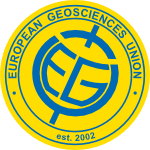Question: What makes the current rate of warming unpredecented? Is the rate of warming comparable to any events in the past?
Comments
-
commented on 18 Jun 2014:
I really like this question and I think its fantastic you’ve asked as not a lot of people know about palaeoclimatology, is one of my favourite things to study!
Extreme climate change has happened on earth before, and over various timescales too.
The geological record, which includes materials like rocks and fossils, provides excellent clues for showing us this. The Earth has had times where oceans had no oxygen (anoxia), an excess of sulphur (euxinia) and when the atmosphere had a large amount of carbon dioxide (CO2). Natural factors such as changes in the Earth’s orbit (eccentricity), the intensity of the sun and volcanic activity can also influence the climate.
Palaeoclimatology is the study of past climates; understanding past climatic conditions can help us to suggest what might happen in the future. The Intergovernmental Panel on Climate Change (IPCC) has a section on palaeoclimate too, as this type of analysis is becoming increasingly important with predicting future climates.
There are three main events of extreme change which have been proposed as ancient analogues for future warming – the Mid Miocene Climatic Optimum (MMCO; 17 – 15 million years ago), the Pliocene Warm Period (PWP; 3.3 – 3.15 million years ago) and Marine Isotope Stage 11 (MIS11; 425, 000 – 375,000 thousand years ago). Below are the main characteristics of each event and whether they are a good or bad analogue for our warming climate today.Mid Miocene Climatic Optimum
– Atmospheric CO2 greater than the present day
– Global mean temperatures were >3°C higher than present day
-Sea levels 25 – 40 m higher
– Antarctic sea ice 20% smaller than present day
– Periods during the MMCO have the required characteristics of what our planet could be like by 2100Pliocene Warm Period
– Atmospheric CO2 similar to today
– Mean sea level similar to today
– Climate interactions fairly complex and not fully understood
– Atmospheric CO2 was only 380 ppm…we are higher and not stopping!Marine Isotope Stage 11
– Earths’ orbital shapes similar
– Sea level reached levels of 20 m above present day
– Atmospheric CO2 was never above 280 ppm and we are currently
>400 ppm
– Reasonable analogue for future climate without anthropogenic CO2Additionally, the Palaeocene Eocene Thermal Maximum (56 million years ago), can be used as an analogue for present day carbon release, both in terms of speed and magnitude. The PETM was thought to be triggered by methane hydrate release; the amount of carbon released by this caused oceans to become more acidic and sea surface temperatures rose by around 3 -8°C (latitude dependent).
Ice cores are also brilliant archives of recent climate change. These record polar temperatures and atmospheric conditions. One of the longest ice core records stretches back ~600, 000 years, and is found at EPICA Dome C in Antarctica. Any type of dust (e.g. pollen, volcanic ash, sand grains) can get transported around the world, and so these are found in ice cores too. Evidence of rapid climate change can be seen in ice cores from Greenland too – these took place during the last glacial period (110, 000 – 12, 000 years ago) during the Pleistocene.
Glossary: ppm (parts per million)



Hi maestro, great question! The current rate of warming is directly linked to the beginning of the Industrial Revolution and the modern age where people are using fossil fuels for energy, automobiles and many other things. I completely agree with the viewpoint that our climate is changing. But it has always changed throughout Earth’s history. There have been periods where glaciers almost completely covered the Earth and it was very cold. During other periods it has been very hot. And still other periods the climate is similar to the present. So, I don’t really view the current rate of warming as unprecedented.
But on the other hand, the eruption of a single, large volcano can spew as much as 10x the amount of CO2 (don’t quote me on that :P) and other gases into the atmosphere that we have put into the atmosphere since the beginning of the Industrial Revolution. Don’t get me wrong, I think that we, as inhabitants of Earth, should be more responsible in the consumption of our precious, natural resources and really push hard to find alternative, “green” energy sources. But I don’t agree with the “fanatics” out there. But I think this has turned more into a political issue, rather than a scientific issue and that’s where everything has gone wrong (but this is a heated topic). Just my two cents 😀 Denise, Rehemat, Daniel and Anna probably have their own opinions too and I would welcome their input too!
0